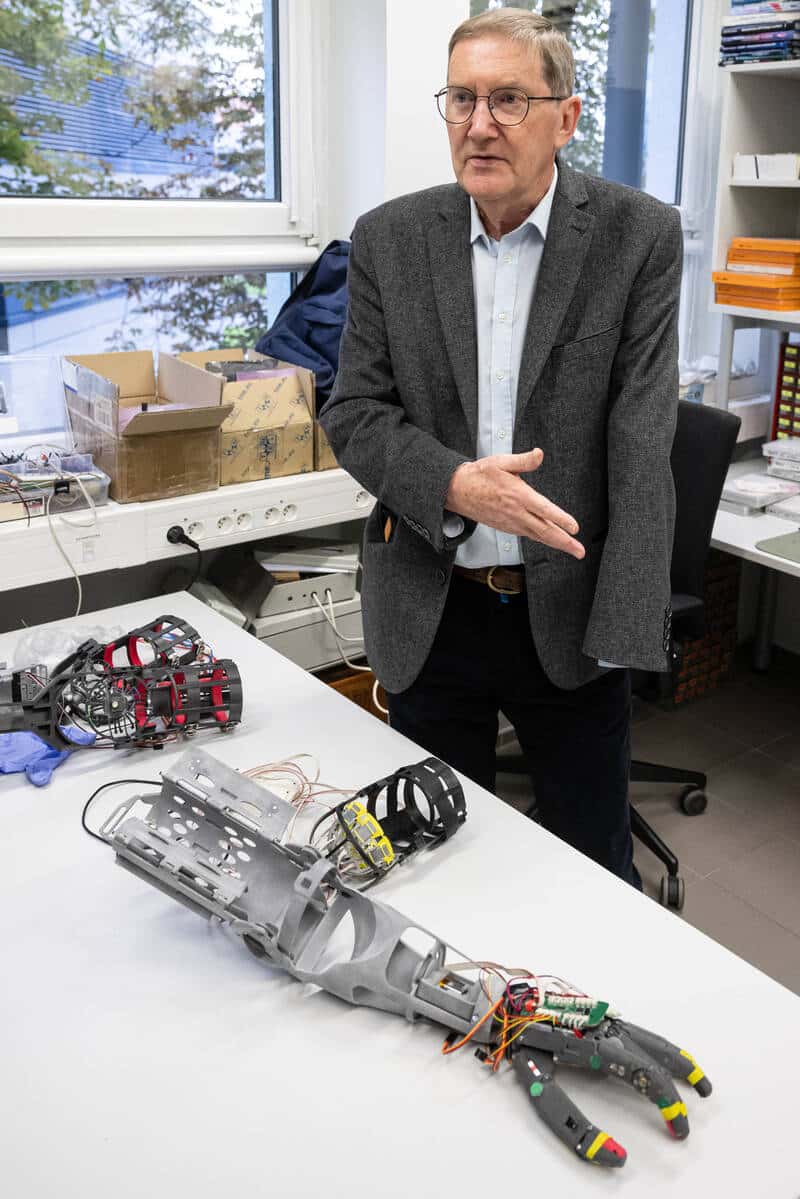Bionic Hand from Wrocław
Scientists from the Wrocław University of Science and Technology are completing work on a prototype bionic prosthesis for people after forearm amputations. It is named BEEPP – Bionic, Ergonomic, Economic, Polish Prosthesis. It consists of plastic components printed in 3D technology – the elbow, the forearm and the palm – filled with medical, mechanical, electronic, robotic and IT systems. It has been engineered by 12-people team led by Dr. Andrzej Wołczowski from the Faculty of Electronics, Photonics and Microsystems, who has had his arm amputated above the elbow. In the project to be completed in 2025 three personalized prostheses will be developed and given to volunteers participating in tests.
The prosthesis is bionic, which means it is moved by impulses sent by muscles remaining on the stump and processed in artificial intelligence interface. The muscle impulses “inform” the device about specific movement patterns so the device can “learn” and improve them, depending on user physiology, degree of amputation and muscles arrangement. Practice is necessary. Sensors installed in fingertips of the palm, which is the most complicated mechanical part, determine force of pressure so as to adjust the grip. Scientists also plan to install vibration devices in fingertips so the user will be able to “feel” touched objects.







